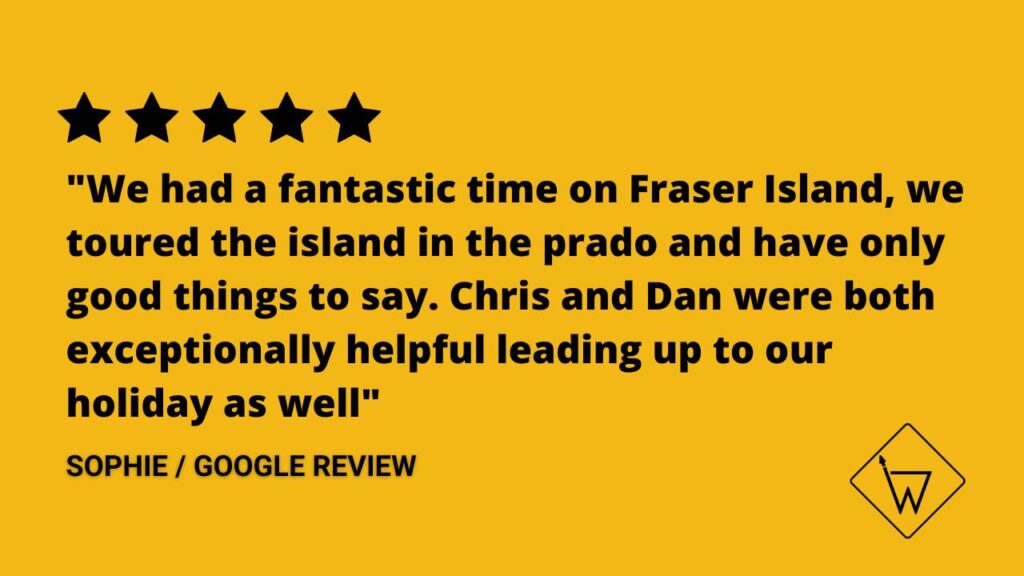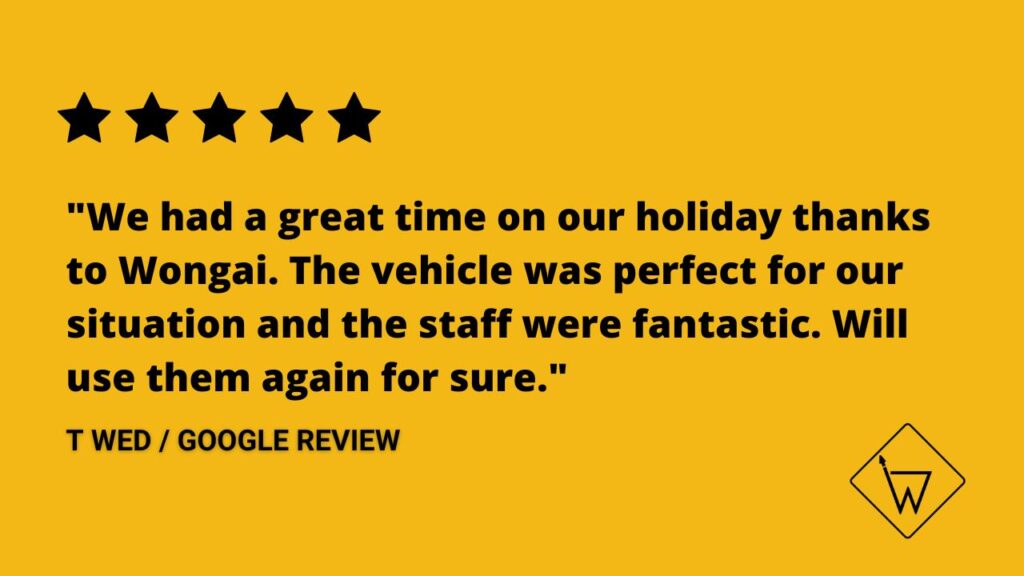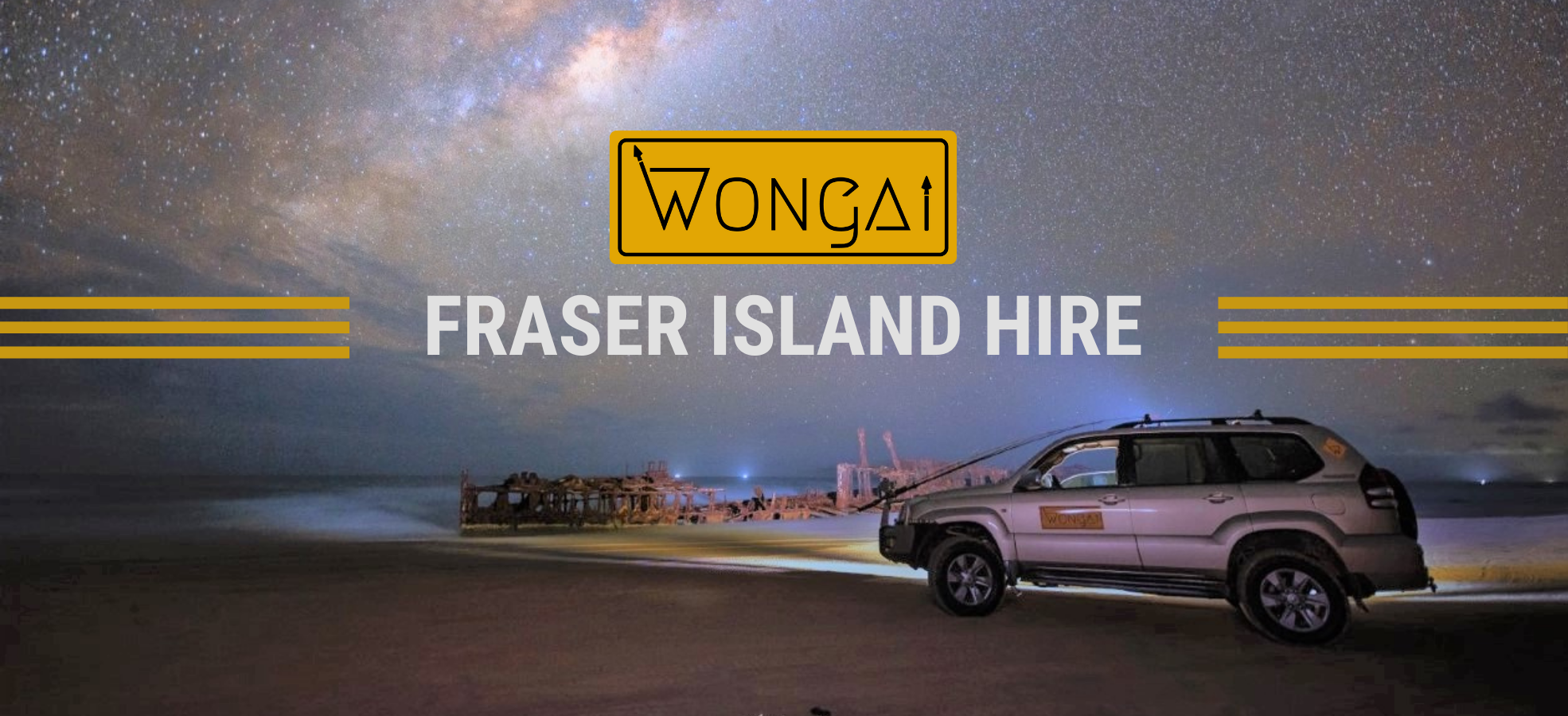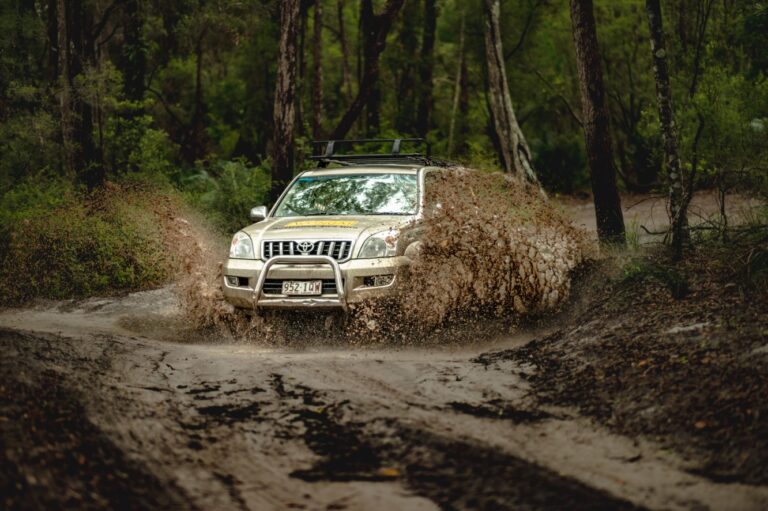Are you ready to explore the beaches of Fraser Island in your 4WD, or maybe you’re planning to rent one of our Wongai 4WD Prados for your adventure? Either way, beach driving on Fraser Island can be an exciting and enjoyable experience, but it’s important to follow proper driving techniques to ensure the safety of yourself and those around you. If you’re taking your own vehicle, be sure to research how it works and familiarize yourself with low range and the settings needed for sand driving before arriving at the island. For those hiring one of our 120 Series Landcruiser Prados, these are some of the best practices for beach driving on the beautiful beaches of Fraser Island and will help you to make the most of your adventure.
1. Tyre Pressures
The correct tyre pressure for driving on sand is generally between 16 and 18 PSI, depending on the specific sand conditions. This should be done at Inskip point and before driving on any sand. If taking the boat across from River Heads, there is a station to adjust tyre pressures near the Kingfisher Resort. In emergency situations, it may be necessary to drop the tyre pressure to a minimum of 10 PSI in order to improve traction. If this occurs, it’s important to reflate the tyres using the compressor on board the vehicle to the recommended pressure range of 16-18 PSI before continuing to drive down the beach. Once you have finished driving on the beach and are returning to the sealed road, it’s important to reflate the tyres to the recommended pressure of 40 PSI or the tyre pressures recommended for your tyres by the manufacturer. This will help ensure the best performance and safety of the vehicle on the road. Maintaining the correct tyre pressure is essential for ensuring the vehicle has sufficient traction and to prevent tyre damage.
2. Engaging Low Range
The Toyota Land Cruiser Prado 120 series is always in 4WD, so you generally won’t need to use low range unless the vehicle is bogged or the conditions are particularly poor. If the vehicle does become stuck in sand, the first step is to reverse the vehicle back out the way you came, so you can have another go at the route after engaging low range. To engage low range in a Toyota Land Cruiser Prado 120 series, follow these steps:
- Bring the vehicle to a stop and shift the transmission into “N” (neutral).
- Hold the brake pedal down and move the transfer lever to the “LL” position (this indicates low range lock).
- Shift the transmission back into “D” (drive) and release the brake pedal.
- Remember that if you’re not in a Prado, you will probably need to put the vehicle into 4wd yourself, and make sure that you are familiar the vehicle you are taking to the Island, before you arrive.
- Once you are out of the poor area, or back on to normal sand, you can put the vehicle back into high range, and continue your trip.
3. Using Differential Locks (Diff Locks)
Differential locks allow the driver to lock the differential, which can help the vehicle maintain traction in slippery or loose terrain. In a Toyota Land Cruiser Prado 120 series, the differential locks are part of the low range selection. To use the differential locks in a Toyota Land Cruiser Prado 120 series, follow these steps:
- Bring the vehicle to a stop and shift the transmission into “N” (neutral).
- Hold the brake pedal down and move the transfer lever to the “LL” position (this indicates low range lock).
- Shift the transmission back into “D” (drive) and release the brake pedal.
- Remember that if you’re not in a Prado, you will probably need to put the vehicle into 4wd yourself, and make sure that you are familiar the vehicle you are taking to the Island, before you arrive.
- Once you are out of the poor area, or back on to normal sand, you can put the vehicle back into high range, and continue your trip.
4. Navigating Transition Points
Transition points are areas where the beach meets the road or another surface. It’s important to navigate these points carefully to avoid getting stuck or causing damage to the vehicle. To do this, follow these steps:
- Approach the transition point at a slow, controlled speed.
- Keep a firm grip on the steering wheel and maintain a straight line.
- Avoid sudden acceleration or braking, as this can cause the vehicle to lose traction or fishtail.
- Keep your momentum up, and make sure you’ve left plenty of space between the vehicle in front, if they get stuck you don’t want to be stuck right behind them!
5. Maintaining Correct Revolutions
Maintaining Correct Revolutions: It’s important to keep the revolutions of the vehicle at the correct amount to ensure the engine is running smoothly and efficiently. At transition points, it is generally recommended to maintain the revolutions between 1500 and 2000 and do not over rev the vehicle. Revs above 2500 will become counter intuitive and could potentially lead to the vehicle becoming bogged deeper into the sand. Rev’s below 1000 will be too low for a transition, and could also result in you getting stuck.
6. Beach Driving Speeds on Fraser Island
On Fraser Island and other beaches, it’s important to drive at a safe and appropriate speed. The speed limit on the island may vary depending on the specific location and conditions, and these limits may change over time. It’s important to check the up-to-date speed limits when you arrive on the island and consult the map we provide at the start of your hire. In general, the inland roads have a speed limit of 30 km/h, pedestrian beach areas have a speed limit of 40 km/h, and the eastern beaches have speed limits of up to 80 km/h in places. The Hook Point area has a speed limit of 50 km/h.
These speed limits are intended as a maximum and should be adjusted based on the conditions and your level of comfort. When driving on sand, it’s especially important to pay attention to the conditions and drive to the conditions, rather than relying solely on posted speed limits. Remember that driving to the conditions is always more important than sticking to a specific speed limit.
7. Top Loading
It is a local Fraser Island law that it is not allowed to top load hire vehicles at all, including roof top tents, awnings, and any luggage on the roof. This is to ensure the safety of the vehicle and its occupants. On other beaches, such as Moreton Island and Stradbroke Island, it is generally acceptable to top load as long as the weight is evenly distributed and does not exceed the vehicle’s maximum load capacity. This is a local Fraser Island rule, and applies to all hire vehicles on the Island.
8. River Crossings / Driving in Water
It is generally not recommended to drive a vehicle in the water, as this can cause damage to the engine and other systems. However, if it is necessary to pass through water, for example Eli Creek, the maximum allowable height in our Toyota Land Cruiser Prado 120 series vehicles is 300mm (i.e. half way up the wheel). Make sure to check the depth and current before proceeding, and drive at a slow, controlled speed to minimize the risk of water entering the engine or other systems.
9. National Parks and Beach Passes
When driving on Fraser Island or other national parks and beaches, it is important to follow all relevant laws and regulations, including obtaining the necessary passes or permits. Make sure to research the requirements for the specific area you are visiting to ensure you are in compliance. If you have recently visited Rainbow Beach or the Noosa North Shore, you may have purchased permits to drive on the beach zones in those areas, remember that these aren’t valid for Fraser Island and you need to organise different passes to drive on the Island Itself. Just be sure to check the specific requirements for Fraser Island and you’ll be good to go!
10. Other Safety Tips
Here are a few additional safety tips to keep in mind when driving on beaches and sand:
- Avoid driving on the dunes, as this can cause damage to the vegetation and potentially create a safety hazard.
- Stay on established tracks and trails whenever possible to minimize the impact on the environment.
- Keep an eye out for other vehicles and pedestrians, and always yield the right of way when necessary.
- Bring a first aid kit and other emergency supplies, as well
Free Quotation!






